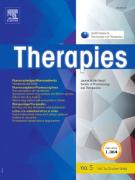Targeting of under-75 years for the optimization of medication reconciliation with an approach based on medication risks: An observational study - 19/11/21

| pages | 9 |
| Iconographies | 1 |
| Vidéos | 0 |
| Autres | 0 |
Summary |
Purpose |
To date, how medication reconciliation (MR) could be prioritized in younger patients remains poorly evaluated. This study aimed at assessing whether a MR prioritization strategy based on the identification of high-risk medication at patients’ admission treatment could be of interest in non-elderly patients.
Method |
This prospective study was conducted between July and September 2017 in an internal medicine unit at Bordeaux teaching hospital. All patients aged 16 to 74 years and receiving at least two long-term treatments at admission were considered eligible. High-risk medications were defined on the basis of a pharmacovigilance study, which identified the drugs most involved in serious adverse effects reported in the Nouvelle-Aquitaine region in non-elderly adults. They included antithrombotics, analgesics, antipsychotics and cardiac therapies. MR-induced treatment changes were compared according to the existence of high-risk medications at admission in study participants.
Results |
Among the 92 study participants, 46 presented with high-risk medications at admission (median age 66 years, IQR 58–70) and 46 without such (median age 54 years, IQR 47–64). High risk-medications (HRM) existing at admission were antithrombotics (52.2%) and antipsychotics (22.4%). MR resulted in treatment changes in 37% of patients admitted with at-risk medications vs. 8.7% of those admitted without such (P=0.001). Overall, the mean number of treatment changes performed after MR was of 1 (95%CI 0.4–1.6) in patients with high-risk medication at admission and of 0.2 (95%CI 0–0.4) in patients without such. MR-induced treatment changes assessed as clinically major at least once by pharmacists or clinicians was greater in HRM group (43.5%) than in non-HRM group (31.6%). However, the consistency was low between clinicians and pharmacists, especially to distinguish the clinical importance of significant and minor interventions.
Conclusion |
Targeting high-risk medications at admission appeared efficient for the prioritization of MR in non-elderly patients hospitalised in internal medicine.
Le texte complet de cet article est disponible en PDF.Keywords : Pharmacology, Clinical, Medication reconciliation, Medication errors, Adverse drug reactions, Drug safety, pharmacovigilance
Plan
Vol 76 - N° 6
P. 629-637 - novembre 2021 Retour au numéroBienvenue sur EM-consulte, la référence des professionnels de santé.
L’accès au texte intégral de cet article nécessite un abonnement.
Bienvenue sur EM-consulte, la référence des professionnels de santé.
L’achat d’article à l’unité est indisponible à l’heure actuelle.
Déjà abonné à cette revue ?

